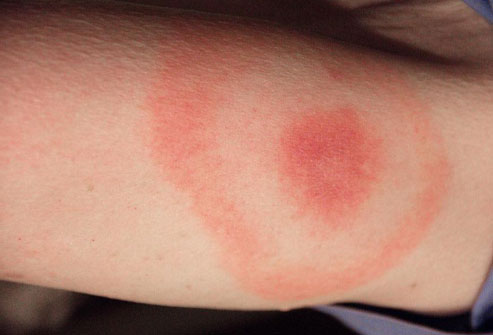
Current methods used to diagnose and treat Lyme disease preventsome patients from receiving necessary treatment, said onetick-borne disease researcher.
Tom Grier, from Duluth, Minn., a biology and chemistry graduatefrom the University of Minnesota, spoke Saturday morning at theWinona Public Library about methods used to test for the diseaseand treatment guidelines set by the Centers for Disease Control andPrevention and the Infectious Disease Society of America.
“Everything is in place to create a disease that’s hard totreat,” Grier said.
Lyme patients should be diagnosed and receive treatment based onsymptoms, not on blood-work results, Grier said.
“We’d be better off if there had never been a test,” hesaid.
The blood tests used are problematic because they detectantibodies produced by a body’s immune system, not the bacteriathat causes the disease, Grier said. within the first four to sixweeks of infection, patients won’t test positive for the diseasebecause not enough antibodies are produced, he said.
As the disease progresses, Grier said, bacteria moves out of thebloodstream and into a person’s tissues. Antibodies can no longerbe detected at that point, rendering the tests useless, hesaid.
Patients would be better served if physicians focused on Lymesymptoms and did away with blood work, Grier said.
For many Grier’s more than 25 audience members, his presentationhit home.
Doctors diagnosed Sharon Kirkpatrick with the disease 20 yearsago. her husband was infected 14 years later. both have battled thedisease since they were diagnosed, she said.
IDSA guidelines now prevent Kirkpatrick and her husband fromreceiving treatment at Winona Health specifically for Lyme disease.Previously, they said they’d been receiving antibiotics in the pastto control the disease.
“I’m just getting sicker,” Kirkpatrick said.
Physicians at Winona Health voted in October to not treatpatients who may have symptoms similar to Lyme disease, but don’tmeet the criteria, as if they have the disease. Winona Health optedto treat patients with the disease only if they meet the guidelinesset by the Centers for Disease Control and Prevention and theInfectious Disease Society of America, according to an internalmemo obtained by the Daily News. many other regional health centersalso follow the same guidelines.
The health experts say Lyme disease patients should be treatedwith antibiotics for about a month and that longer treatments putpatients at risk. In April, the IDSA released results of afour-year review into its own standards for treatment that showextended treatment with antibiotics can cause dangerous healthcomplications, like blood infection, diarrhea and other drugreactions.
But some Lyme disease patients say the affliction haslong-lasting effects. they want the health groups to adopt abroader definition of the disease that recognizes antibiotics as anacceptable treatment, even years after an initial diagnosis.Opponents say the guidelines ignore the complexity of tick-borneillnesses and discount a number of people who suffer ongoingsymptoms.
Winona Health issued a one-paragraph e-mail response in Decemberto its adopted guidelines:
“Winona Health considers the diagnosis and treatment of LymeDisease a serious and important topic,” the statement read. “As wehave done with a number of medical conditions, we supportevidence-based research and protocols which are the establishedstandard of care.”
Kirkpatrick said she believes the disease has attacked thetissue in her husband’s brain and caused severe dementia.
“He only knows he was once a teacher because I tell him he was,”she said.
Kirkpatrick said she is fearful that without antibiotics, herdisease will progress in a fashion similar to her husband’sillness.
“There’s an agenda out there to prevent antibiotics from beingoverused,” Grier said, “and it’s affecting the treatment ofpatients.”